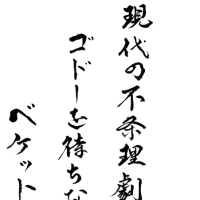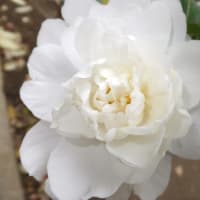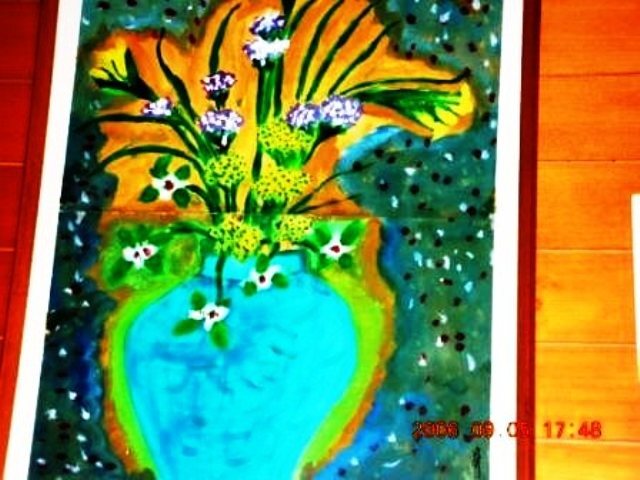・泉のほとりの傷ついた鹿:--->>>^^^
泉のほとりで、静かに息をする傷ついた鹿、 痛みに耐えながら その瞳には、深い森の記憶が映る
かつての自由、風を切る躍動感・・
水面に映る、その姿は揺らぎ が 心は、決して折れない
泉の水は、癒しを与えるかのように 優しく、 その傷口を洗い流す・・
鹿は立ち上がる、力を取り戻すため と 踏み出すその時
泉のほとりで、生命の歌が...・・
傷ついた鹿は、一歩 前へと歩き始めていた・・>>>⑴
****
泉のほとりで傷ついた鹿。自然の中での生と再生のサイクル、困難に直面しても、希望を失わずに前進する力強さ。鹿が再び立ち上がり、生きる力を取り戻すのである。。。
***** 2⃣
泉のほとりで、静かに息をひそめる傷つきし鹿、 だが 希望を失わない鹿の目には、未来の夢が映り
静かな決意を映し出しているかのように・・
すると 泉の水は、生命の泉となり 傷口に触れ、癒しをもたらす
鹿はゆっくりと立ち上がり、新しい一歩を踏み出す
その姿は、強く 然し 優雅に・・
泉のほとりで、傷ついた鹿は、再び歩き出す
その足取りは、苦難を乗り越えたように
確かな力強さをみせていた・・・2⃣
***
泉のほとりで傷ついた鹿。逆境に負けず、困難を乗り越える力と、自然との調和。鹿が泉で癒され、再び立ち上がる姿。どんな時も希望を持ち続け、前を向いて歩き続けることの大切さ>>> ***・
鹿が泉を見つけたとは、自然界の生物が持つ本能的な探求心と生存本能。野生の鹿は、生き延びるために水源を探し。傷ついた鹿が泉を見つけるとは、偶然の幸運でなく、環境に対する敏感さと、生きるための強い意志の表れなのである。。。
森の中で、鹿は自然のサインを読み取り、水の音や湿った空気、地形の変化などを頼りに泉を探す。傷ついた鹿が泉を見つけたとは、ただの運命ではなく、生存への証。泉は、鹿にとってただの水以上のもので、それは安全な避難所であり、回復の場であり、生き抜くための不屈の精神と再生を象徴する場所なのである。 *******>>>
文学におけるトポスとは、詩学や文学で特定の連想や情念を喚起する機能を持つテーマや概念、定型的表現のことを指し、この用語はギリシア語の「場所」を意味するτόπος(topos)に由来しており、日本文学における枕詞もトポスの一種である。
トポスは、文学作品において共有する文化的な背景や感情を呼び起こすために使用されることが多く、作品の理解を深めるための重要な要素でもある。
トポスは、アリストテレスの『トピカ』における「定石」という修辞学用語から発展したもので、1948年にクルティウスが『ヨーロッパ文学とラテン中世』で文学上の定型表現という意味でのトポスを広めた。
トポスは、文学作品を読む際の鍵となる概念であり、作品の背後にある文化や歴史、作者の意図を理解する上で欠かせない、トポスの理解は、作品をより深く、豊かに味わうための入口。。。>>>* / *228--*245--/*
The Motif of the Wounded Deer by the Spring: A Reflection on Vulnerability and Resilience
The image of a wounded deer by the spring is a powerful motif that has been explored in various cultures and artistic expressions. It often symbolizes vulnerability, grace under pressure, and the resilience of life. In Japanese culture, the deer can represent gentleness and serenity, which makes the image of a wounded deer even more poignant.
The deer's journey to the spring, despite its wounds, reflects a deep instinct for healing and survival. The spring itself is a symbol of renewal and purity, suggesting that nature offers a sanctuary for recovery and hope. This scene can evoke a range of emotions, from empathy for the deer's plight to admiration for its determination. >>
Artists and storytellers have long used such motifs to delve into the human condition, drawing parallels between the deer's struggle and our own experiences with pain and healing. The wounded deer's search for the spring mirrors our search for solace and redemption in times of hardship.
This motif also invites contemplation on the interplay between strength and fragility in life. The deer, an animal known for its agility and grace, is rendered vulnerable by its wound, yet it does not succumb to despair. Instead, it seeks the restorative powers of the spring, demonstrating an innate will to overcome adversity.>>
In literature, this topos can be found in various forms, from ancient fables to modern poetry, each offering a unique perspective on the themes of suffering and recovery. It serves as a reminder that even in moments of weakness, there is an opportunity for growth and renewal.
The wounded deer by the spring is a testament to the enduring spirit of life, encouraging us to persevere through our challenges with the same grace and resilience. It is a motif that continues to resonate across time and culture, reminding us of the beauty and strength that can emerge from our most vulnerable moments.>>>..




















※コメント投稿者のブログIDはブログ作成者のみに通知されます